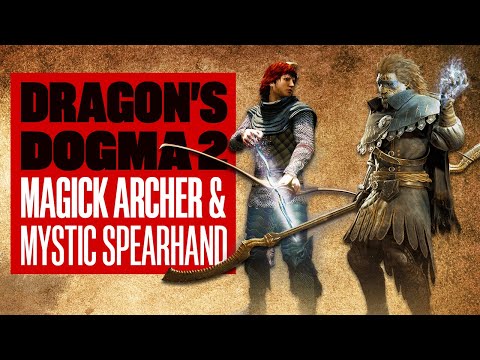Like returning to a beloved amusement park as an adult, Contra: Operation Galuga instantly reconnected me with the 2D run-and-gunners from the quarter-slinging arcade days of my youth. And just like revisiting a childhood fancy, I quickly remembered why I had so much fun with this series, while also feeling a bit underwhelmed by how little things have evolved in all that time. This reimagining of the original Contra offers a perfectly adequate modernization of a bonafide classic that makes for an enjoyable jaunt alongside your friends, but it’s also perhaps overly faithful to its predecessors, allowing for only the slightest tweaks. I don’t regret the handful of hours it took me and my buds to get through all of Operation Galuga, but it’s one of those games that’s likely to fade from my memory just as quickly.
This sidescroller plays it safe with the reliable, if not particularly exciting, formula of fighting through stages filled with enemies before taking on a boss. Despite being framed as a sequel to the original Contra, Operation Galuga is a lot closer to a remake. It features the same macho dudebro protagonists, Bill Rizer and Lance Bean, on the same island going through many of the same stages in the same order. You and a friend will blast your way through familiar levels, like the waterfall stage with a giant alien at the end, the icy train ride stage, and even that part where you end up inside a massive alien’s body to do battle against the big guy’s gross parasites – just like in the original Contra from 1987. That said, Operation Galuga sets itself apart with some substantial additions, including fully voiced characters (complete with cutscenes), new playable characters with their own abilities and playstyles, and most notably, new 2D stages to replace the less interesting pseudo-3D shooting gallery levels from the original. All of these things do help to refresh an experience that plays things extremely close to its roots in almost every other sense.
Operation Galuga doesn’t always succeed with the new stuff it tries, however, and nowhere is that more true than in its story. I certainly appreciate the extra context for why our heroes are doing the things they do, but with stilted writing, one-dimensional characters, and lengthy dialogue sequences in which meaningful developments arrive sluggishly, this added story mostly detracts from an otherwise fast-paced sprint through hellish battlefields. For example, I probably didn’t need to hear extensive monologues about the Lemris, the story’s doomsday macguffin, to grok that we need to kill the bad guy who wants to use it to wipe out humanity. And I definitely didn’t need to stop in the middle of a level to listen to said baddie tell me that I’ve been tearing through his “unstoppable” forces – I know that already, mister evil alien, sir. Could you maybe deliver this lame smack talk while I resume shooting your friends?
Both the classic levels and the completely new stages at least make for some solid old school action. I always really liked the creepy journey through the inside of a living organism from Contra, so experiencing that in all its gross glory with upgraded graphics and mechanics was a lot of fun, and the completely new level that put my team on hovering motorbikes, then sent gangs of similarly octane-powered goons after us, mixed things up just enough to keep us on our toes. But whether it’s a reimagined legacy level or something wholly fresh, you’re still basically always doing the same stuff these games have been doing for many years: dodging enemies while filling the screen with colorful projectiles of our own as you run, jump, and dash your way to the end. There’s certainly nothing wrong with sticking to the basics, but it’s also one of those rides where you can more-or-less tell exactly how things are going to go just by looking at the title screen, and that doesn’t make for an especially exciting time. I enjoy retro, arcadey run-and-guns as much as the next boomer, but it would have been nice to find more surprises or evolutionary changes here, because it’s not like this genre couldn’t benefit from them.
Operation Galuga keeps the vast majority of the Contra gameplay recipe intact, which means longtime fans are unlikely to be blown away by anything besides the bullets enemies send your way. You’ll use an almost identical arsenal from previous games, from the Laser to the Homing Gun, fight the customary aliens and human commandos, and take on giant bosses who really don’t like to be shot in the eyeball. There are a couple minor tweaks here and there that just barely break the mold though, like how the new characters can do things like hover for a short period, shoot a grapple hook and zip over to distant surfaces, or slide under incoming fire and into enemies for damage, all of which provide a minor hiccup of fresh air.
Many design elements from developer WayForward’s previous Contra game, Contra 4, have been incorporated here as well. This includes the two-weapon system that allows you to keep a backup firearm stowed away so you can switch things up depending on what you’re facing – for instance, I liked to use a Machine Gun for straight DPS, but kept a Spread Gun or Flame Thrower handy for crowd controlling waves of chump minions. As an added twist, you can now upgrade your guns by picking up a second copy of something you’re already carrying, which buffs that weapon until you get hit, at which point you’re demoted back to the basic version. And if you’re feeling frisky, you also have the ability to overload weapons, sacrificing them in exchange for a temporary benefit, like becoming invincible for a while or emitting a shockwave of bullets in every direction. It’s usually not worth losing a cherished weapon for such a short-term effect if you can avoid it, but it’s definitely a nice option to keep in your back pocket if you find yourself in a pickle – especially since, by default, dying causes you to lose your held weapons anyway.
The Arcade and Challenge modes from Contra 4 also make a return, the former which enables four-player co-op and dares you to get as far as you can with a set number of lives, while the latter tests you with special limitations, like trying to get through a level without firing a weapon. There’s definitely some novelty in the challenge and chaos of marathoning each stage with a larger group, though that can get thin fairly quickly since you’re running through the same eight levels as the regular campaign. Similarly, there’s some minor fun to be had in tackling the trials that await in Challenge Mode, but unless you’ve a serious appetite for replaying each stage with some cheeky conditions, that too runs dry pretty fast.



